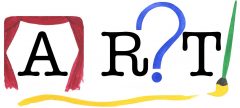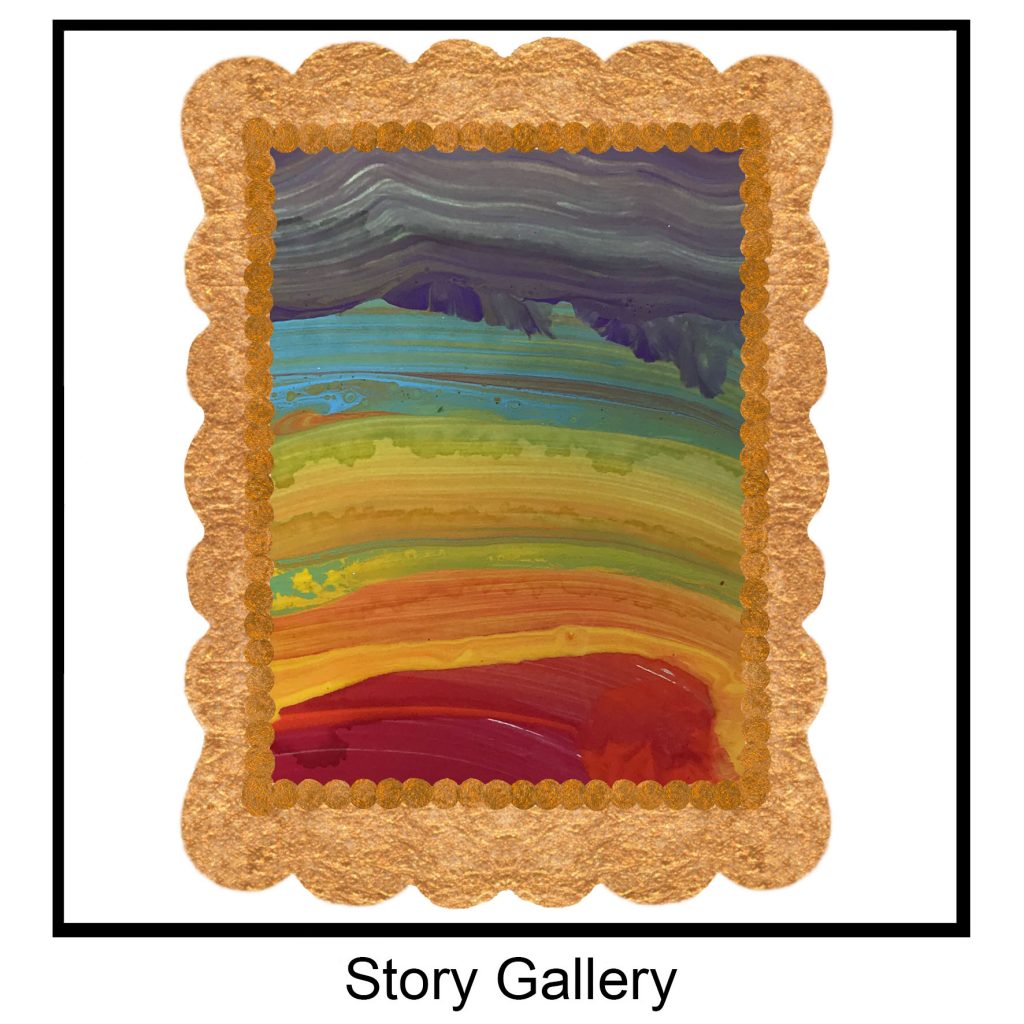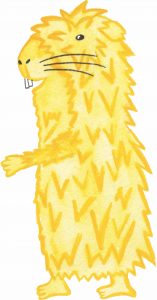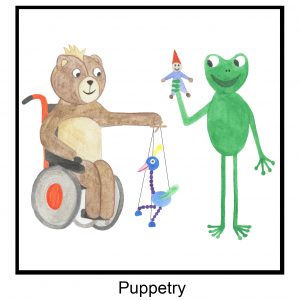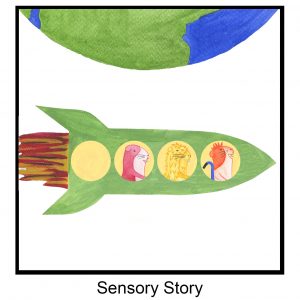
Guinea Pigs from Space: Creative writing for everyone!
Do you like stories? I do!
For our research we wanted to see if we could make stories together in which everyone could share what they like and love. To be able to do this
we used sensory stories where you can feel, smell and listen to what a story is about. We also made and added our own pages, to make sure every story was special!
Guinea Pigs from Space: Creative writing for everyone!
Do you like stories? I do!
For our research we wanted to see if we could make stories
together in which everyone could share what they like and love. To be able to do this we used sensory stories where you can feel, smell and listen to what a story is about. We also made and added our own pages, to make sure every story was special!
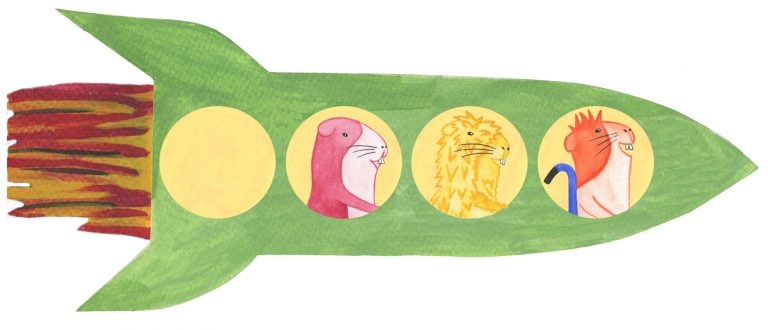
Our story was about three Guinea Pigs who travelled from space to earth. After they saw the beautiful art that humans created, they wanted to know what inspired us. The Guinea Pigs wanted to know what we love so much that it makes us want to paint, dance, perform, make music, films and play with puppets. Therefore, they went on a journey to visit lots of different children and young people to see their favourite place or item.
Everyone could choose between two options. For example, the Guinea Pigs could travel on the back of a snake or on a bear, or past a beautiful smelling flower field or some cheesy feet. To make choices we had two ‘sensory items’, so the young collaborators could point at them.


After we made the journey of the Guinea Pigs, we made our own page that could be added to the book.
The next time we read our story we looked at all the pages. We looked at the items we had chosen for the guinea pigs and some items that the children and young people had selected.
We did not want our teachers to miss out so they were also allowed to choose. They could choose to be dressed as an old lady or a wizard. But we were shocked about what happened next! The teacher would steal the magic box with our story. Luckily we had a plan and we made a very clever swap to get our box back – and the teacher was fooled by our clever trick!
When the story was finished the book stayed in the class so the children and young people could read it again if they liked.
In total we made eight books! Each one completely different!
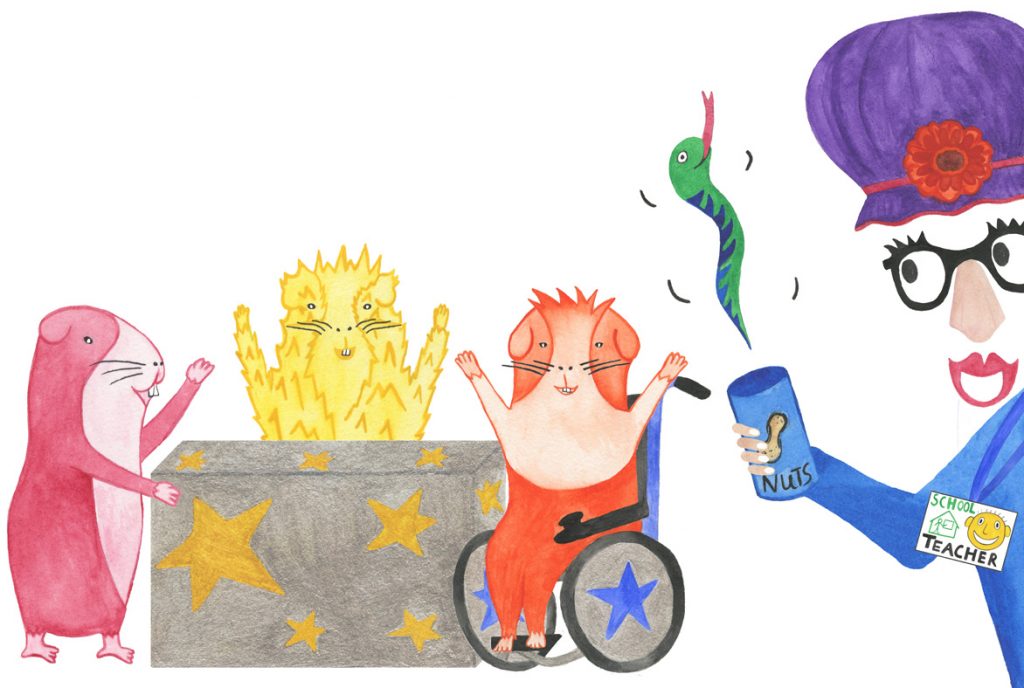
Click on the ‘story gallery’ picture to look at the all the wonderful artwork produced by the young researchers at Springfield School in Crewe and Linden Bridge School in London.
Select to read more:
When we talk about creative writing most people will think about words, spelling, grammar, metaphors or other literary devices. It would, however, be a shame if people feel they cannot participate in creative writing, as sharing stories is something everyone can do and arguably there are many benefits to work creatively to express yourself especially with other people.
If you have experience of special needs education you have probably come across sensory stories. These stories are not just told through words but they draw on pictures and the senses (hearing, touching, smelling as well as through movement) to share what happens. When I was working as a teaching assistant, I really enjoyed making stories and especially because I felt that children with learning disabilities do not often have stories written specifically for them. I therefore wanted to find ways in which children with learning disabilities can be included and feel that stories are also written for them. One of the first stories I made was for a class in London. There were five students and five members of staff and each one of us had links to a different country of the world. I made a book in which we pretended to travel to all these countries. The children made their own pages and the parents allowed us to borrow items (for example music, food, souvenirs and jewellery) so we could look at these while we read our story.
After seeing how positively the children reacted to seeing their own work and recognising the items, and after hearing how much parents had enjoyed being part of the story, I wanted to do more research looking at the creation of stories together. However, the story above was written for a very small class and I wanted to find ways of making it accessible to bigger groups and for more classes at multiple schools.
After volunteering for Fighting Words Belfast I was very inspired by the structure that this organisation used. Fighting Words invites schools to come to a workshop space to write together as a class. Developed by Roddy Doyle in Dublin, the children and young people first work together to get the story started and together select, for example, a main character and a greatest wish. They then write the first part of the story and finish on a cliff-hanger, after which they continue to work in little groups to finish stories individually. I built upon the way children make choices to construct the story and simplified this so that children without language can also indicate what they would like to happen.
The teachers initially thought that it had to be clear what kind of place or item the children had chosen for their page. However, ‘writing’ the pages could be done in any way the children deemed necessary and the teaching staff would help when appropriate. I brought paper with different textures and patterns (origami paper and fabric with West African print) and the schools provided a range of colours, paint, glitter and coloured sand. Some of the parents had prepared special labels to help to discover the children’s favourite places and items. The teachers also printed some pictures of the children and/or places and items to decorate the work. With so much on offer it was always very interesting to sit down as a class around a big table with all this material. Groups were more used to structured art activities where there is a template and a clear goal (for example a bunny for Easter or a flower to celebrate spring) and as such the ‘do what you like’ approach took a few minutes to settle. However, many of the teachers reported how surprised they were with the participation of the children and how engaged they seemed. Only a few children did not want to take part or only joined in briefly, all of which was completely fine and factored in to the session.
The results were stunning!
Reading the stories was also very enjoyable. I had consulted Dr Gill Brigg who wrote a PhD on the subject of creating performances for young audiences with PMLD. She offered very good ideas about using lights to create a ‘dramatic atmosphere’ and to indicate something special was going to happen in the classroom. To draw attention I had stuck some fairy lights to the lid of the box with props and asked the teachers to make the room as dark as possible, to highlight the effect when opening the lid. Jeanette McNamara, a drama practitioner, teacher and a former student of mine, has written and spoken on the importance of using colours in performances for young audiences with PMLD. I drew on her suggestions that primary colours, as well as gold and silver, are particularly effective at focusing attention on the action. I also received very useful advice from Replay Theatre, a company in Northern Ireland, which specialises in theatre for young audiences with special needs. Being able to speak with Andrew Stanford (Inclusion Lead Artist) about creating atmosphere, developing relationships with schools and creative preparation greatly inspired and helped me to develop the work. Finally, I spoke to Marnie Kennedy (Project Co-ordinator) from Fighting Words Belfast. As this organisation conducted a project with young people on the autistic spectrum, she was able to offer some invaluable advice on the benefits of creative writing.
Many of the teachers reported that during the reading sessions the children were very engaged with the story. I noticed that there were many levels at which the children were able to access the story: Some paid a lot of attention to the narrative of the guinea pigs (although the children did struggle a bit to recognise the primary coloured guinea pig, with some calling it a hamster or even a Telly Tubby). Other children mainly focused on the sensory items and making eye contact with me as the storyteller. Although I worried about the children taking turns and letting go of the items when it was the turn of someone else, this wasn’t really a problem at all. Perhaps the pattern of going round in a circle helped as well as the way I counted down to indicate that their time with an item was coming to an end.
It was interesting to see which sensory items drew most response: The plastic snake, the bird song on the sound button and the slime/jelly representing elephant snot. Although the smell of cheesy feet was meant to be disgusting, there were too many cheese lovers, and this sent also proved popular. Blowing up and letting go of the balloon was also interesting. Some of the children were quite nervous about balloons but at the same time fascinated. I was told that one of the boys hates balloons so with the idea that he could reject it and make sure the balloon didn’t feature in the story, I gave him the choice. It was very surprising that he did choose the balloon and then watched the action from behind his hands. The final bit of the story where the teacher got a choice was also interesting. Some of the students clearly understood this act and were very excited about this part of the story, some may have been unsure or needed more time to process what was happening. No young collaborators removed their attention or became visibly upset. One girl was so involved in the action; she surprised the teaching staff by using multiple words in one sentence, something they never heard her do before.
As many of the children were non-verbal the main feedback I received were big smiles, eye focus and a willingness to sit for 20-40 minutes and watch the story unfold. There were some beautiful and clear reactions when the book would turn to one of the children’s pages and they would recognise their work or the photos on the page. There was one boy who did not like this part of the story and shouted ‘no’ when seeing his page- we quickly moved on. Some of the children did not like waiting for their turn or sitting still and with clear instructions that they did not have to participate, the teaching staff would let them do their own thing. It was useful to see that some of the children who did not want to join the story circle the first time round, did find a place near or in the circle to follow the story the second time I came to the class. One boy shouted enthusiastically: “I like your stuff” and one girl observed my self-made lift on a string and said “clever”.
In terms of understanding the interactive sensory story as part of knowledge co-creation, I believe the project highlights some very positive potential. Especially the way in which the story offers multiple ways of engagement and how it brings out so many unique personal pages. It offered an example of a different way of using storytelling to address the individual child and some of their personal experience, while also working in a collective manner in the way that the individual perspectives became a story for the whole class. A number of teachers remarked that they found the sessions inspirational or that they would be ‘stealing’ ideas (this a phrase some teachers used but of course this is an experimental project that belongs to all collaborators, young and old, and as such it is not possible to ‘steal’). I was especially excited when one of the teachers showed how she had used some ideas to create a ‘sensory’ book for the students and their activities at school. Some of the other comments of the teaching staff were:
“I liked how the children were involved in the story and how they picked what was happening.”
“Great art session, all children really engaged!”
“The visuals captured the students with the sound effect or lightning. You could see how engaged they were especially for touch and smell.”
“The shoe box with a torch was an amazing idea. The ‘smelly’ cheese really engaged the more academic children.”
“Great use of all props in a box.”
“[The child I support] focused well which is usually a big problem for him.”
“I felt that the children really engaged in the story. Also it was nice that the children were made a part of the story.”
